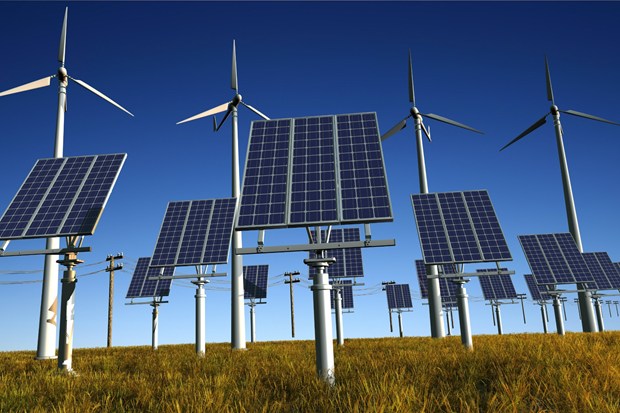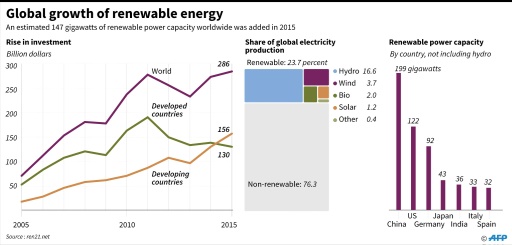
Renewable energy provides substantial benefits for our climate and health and is fast becoming a major power sector in economies worldwide. Last year saw record worldwide investment and implementation of wind, solar, and hydropower, despite fossil fuel prices being at historic lows.
Global investment in renewable power—albeit being at a significant disadvantage regarding government subsidies—was more than double the amount spent on new coal and natural gas-fired power generation at $286 billion.
China accounted for more than a third of total investment worldwide, while India, South Africa, Mexico, and Chile also significantly increased spending. For the first time, developing countries spent more on renewable power than rich ones; European investment slumped by around a fifth compared to 2014. The Global Status Report expressed that “policy makers need to remove barriers that prevent the increased share of renewables in heating and cooling and transport.”

Around the world, renewables have been established as mainstream energy sources, opening new markets for centralized and distributed renewable energy as countries transition from dependence on fossil fuels. In total, some 147 gigawatts of capacity were added during the year—the largest increase ever, reportedly equivalent to all of Africa's generating capacity.
Distributed generation is generated or stored by a variety of small, grid-connected devices—such as PV panels of rooftops for solar power generation. Distributed PV has the promise of supplying power during peak demand time and very close to the demand itself, thereby eliminating transmission loss. However, the integration of distributed PV resources into the electrical power grid presents some difficulties for the management and dispatch of two-way current flows into the grid.
Centralized plants are typically located at the point of best resource availability, and is distributed from there. For example, in the United States, a large-scale, centralized infrastructure for solar energy would best be built in the southwest, where the nation’s concentration of solar resource is greatest. Suffice it to say, centralized plants require huge capital investments and may require new transmission lines to transfer power from the station to the load centers.
The need for new infrastructure in a growing industry isn’t all bad; however, around the world, 8.1million people are now employed in the clean energy industry. In the US, more people now work in the solar industry than in oil and gas extraction.
Investment in renewable energy provides numerous benefits, including a vast and near inexhaustible energy supply that’s environmentally sustainable. While 2015 showed record growth in areas such as wind and solar power, 2016 is expected to show a continued effort to bring all types of renewable energy to the mainstream.
Source: Phys.org, BerkeleyHass, WIE, The Guardian, UCS
Advertisement
Learn more about Electronic Products Digital





